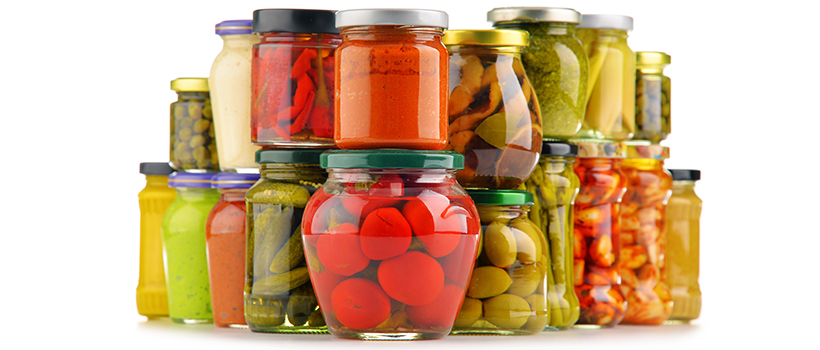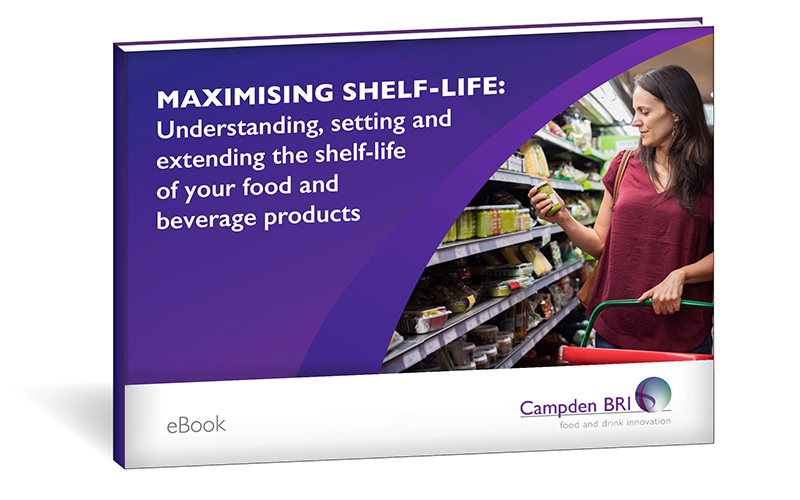
Setting shelf-life for ambient food and beverage products
30 March 2023 | Jo Baker-Perrett, Food and Drink Microstructure Team lead
Providing an indication of minimum durability (best before date) is a legal requirement for most ambient food and drink products, but how to set this date for ambient goods is a commercial decision. This means it is up to the manufacturer to decide through determining by when the quality has become unacceptable – in other words, the end of the product’s shelf-life. Shelf-life testing for ambient goods needs to be done on a case-by-case basis, in relation to the intended length of storage, by assessing what factors limit the product’s life.
Safety of a product is the number one priority. For food and drink products to be ambient stable from a food safety perspective, their intrinsic properties (such as low pH or very low water activity) and / or their processing (such as a thermal process / ‘kill step’) must be such that the product does not support the growth of pathogens and / or pathogens are eliminated from the product.
Download the complete Maximising Shelf-life eBook, for free, to unlock the tools for measuring and maximising the shelf-life of your food and drink products whilst ensuring their safety and quality.

It is important to be confident that a product remains safe over the entire shelf-life. Intrinsic product properties that control / prevent the survival and growth of pathogens may change throughout the life of some products. For example, for products where microbial growth is controlled by low pH and / or low water activity – the shelf-life may be limited by the changes in these parameters, therefore it must be ensured that these controlling parameters do not change to an extent that compromises shelf-life / food safety.
Factors limiting the quality shelf-life of ambient products
A shelf-life limiting factor is a parameter that is changing over time to cause the product to become of unacceptable quality. This could be changes in texture or consistency such as biscuits going soft or yoghurts becoming too firm. This could also include chemical changes, colour changes or products becoming rancid. It could even include microbiological changes such as bread going mouldy.
The sensorial experience that consumers get from a product will likely be key to its commercial success. The appearance, odour, taste and mouthfeel are all important factors in grading the quality of a product and cannot be easily characterised using instrumental analysis. Sensory testing is therefore a key part of quality shelf-life testing to help determine when the sensory attributes are no longer considered acceptable by your business / when you would expect consumers to find the product unacceptable.
There are some situations where the shelf-life of the product is driven by regulatory constraints, for example if the product has a nutritional claim associated with it. If the claimed level of nutrient is not maintained (and declines sooner than other quality parameters), this may be the shelf-life limiting factor. Likewise, if there is a issue with migration of a packaging component into the product, for example tin in a canned product and the level of tin exceeds the maximum regulatory limit before the quality of the product declines then this will be the shelf-life limiting factor.
Overall, it is important to understand how a product changes over time and then perform the relevant analysis to monitor these changes. These tests could include instrumental analysis (such as texture, colour or rheological), sensory assessment and chemical analysis.
Accelerated shelf-life of ambient products
Manufacturers often want to know the shelf-life of a product without having to wait the full amount of time. This is not possible on its own without any existing data.
By increasing the intensity of some of the storage conditions (such as temperature, humidity and light exposure) and comparing the changes to what happens at standard ambient conditions, it may be possible to estimate the real time shelf-life based on the accelerated data. However, elevating the storage conditions can cause changes that would not ever occur under normal conditions, such as chocolate melting or the creation of new chemical reaction pathways. That is why it is important to conduct the ambient shelf-life trial (in full and in real time) alongside any accelerated trial.
It may be possible to create computer models, make predictions, and estimations of shelf-life but these are not 100% accurate and require existing data to use as an input (such as the current shelf-life under standard ambient conditions, for example).
Commercial pressures can mean manufacturers want to get their product onto shelves as quickly as possible. In these situations, one approach is to carry out the shelf-life assessment at ambient temperatures and get the product to market with a modest best before date. Once the product is on sale, reference samples can be taken and stored. The shelf-life of the product can then be tested over a longer period and extended on a rolling basis, while continuing with shelf-life extension trials.
When do you need to reassess shelf-life?
Shelf-life assessment isn’t only necessary during new product development. As well as being reassessed periodically it must also be reassessed if you make a change to an ingredient, supplier, process or packaging. The full shelf-life assessment may not need to be repeated – an experienced shelf-life assessor may be able to predict the likely effects of any changes made to the product so that only the tests necessary for the parameters that have changed will need to be repeated. For example, changing a high moisture barrier film of a bakery product to low barrier but more sustainable packaging will require testing for moisture uptake and the changes that this can incur.
The benefits
There is no specific legislation on how to set a shelf-life for ambient stable goods. The Food and Drink Federation has produced a guideline document which outlines some of the things that need to be considered, and manufacturers can use shelf-life testing as evidence of due diligence for retailer standards.
We help our members and clients to understand, measure and maximise the shelf-life of their ambient and other food and drink products. Assigning the correct shelf-life is paramount for the commercial success of a new product, and maximising product shelf-life offers many benefits to manufacturers (improved profit margin, reduced waste, increased efficiency), retailers (increased minimum life on receipt) and consumers.

About Jo Baker-Perrett
After graduating from his master’s degree in chemistry from the University of Sheffield in 2014, Jo worked in education before joining us in 2016. Since then, Jo has worked in the bakery department, and then in Food and Drink Microstructure, after which he started managing this section, which is mainly focused on physical characterisation and ingredient functionality.
Jo has published various Campden BRI research reports and trade press articles, as well as producing regular food industry blogs for our website.
Download our FREE Maximising Shelf-life eBook today!
Explore different strategies to maximise and extend product shelf-life, without compromising safety or quality.
How can we help you?
If you’d like to find out more about how we can help with the self-life of your products, contact our Support Team.






